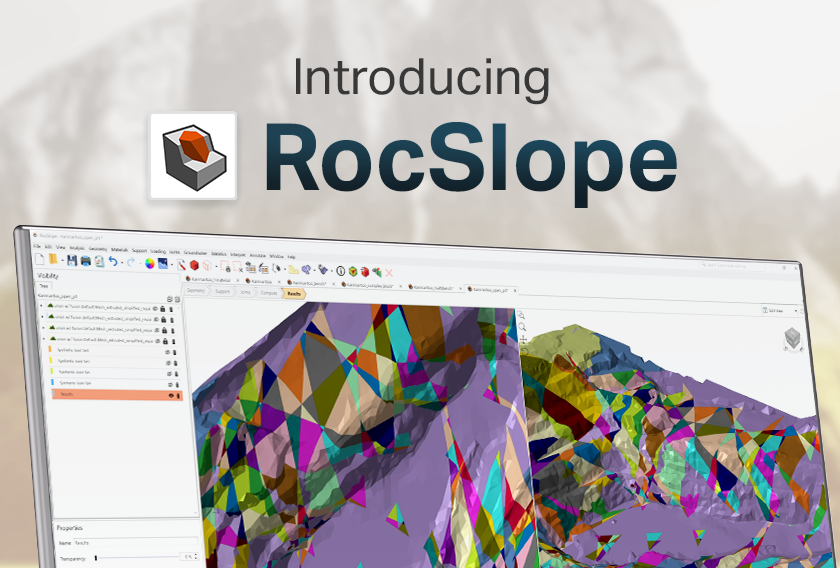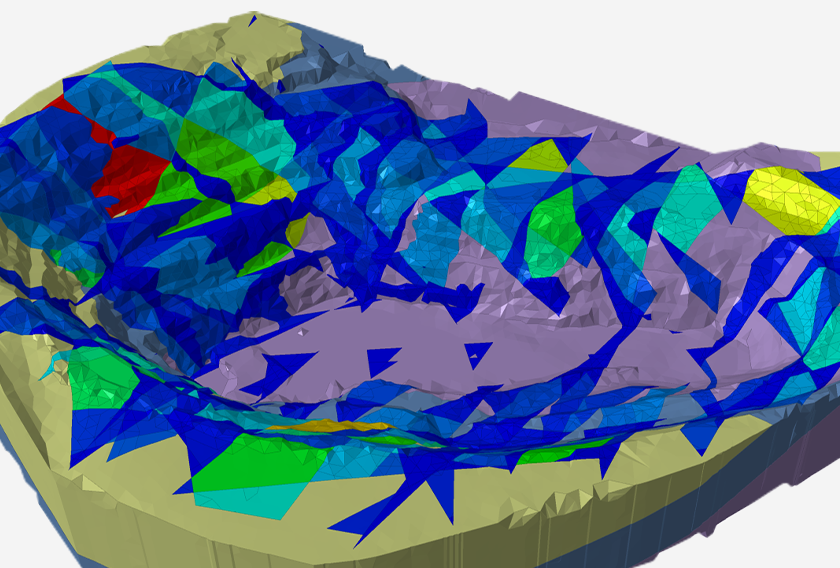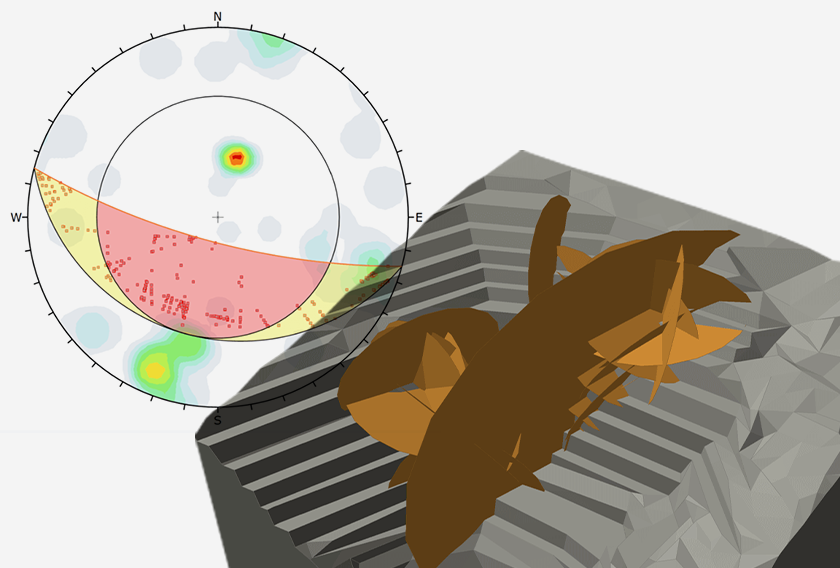A Comprehensive Look at RocSlope3 and RocFall3’s Integrations for Rock Slope Analysis
- Dr Grace Huang, Geotechnical Product Manager
RocSlope3 and RocFall3, our two latest geotechnical software offerings, stand testament to our dedication to developing innovative solutions that can redefine the landscape of rock slope stability and hazard analysis. As these programs continue to evolve, this article looks at the exciting possibilities that lie ahead with the potential integrations between RocSlope3 and RocFall3.
Rock slope failures, such as structurally-controlled wedge failures (Figure 1), can result in rockfalls and associated loss of lives and productivity. Depending on the rock mass quality, a failing wedge or plane may disintegrate at planes of weakness, resulting in the runout and dispersion of smaller blocks.
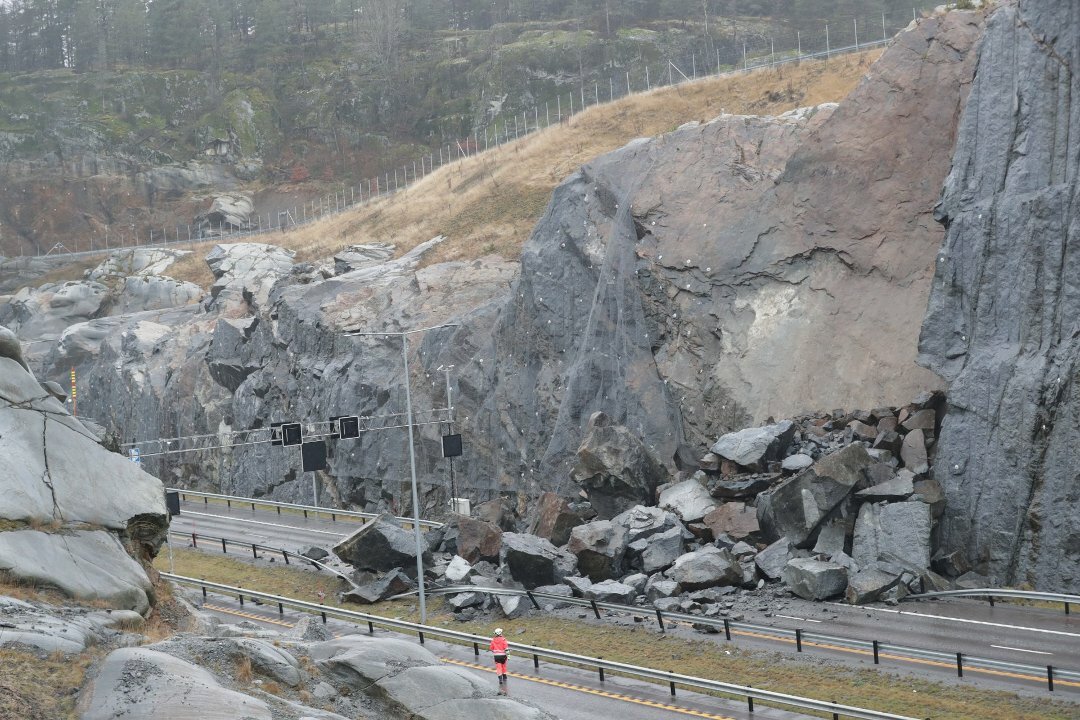
Designers would ask the following question during hazard assessment:
- Where is slope failure likely to occur?
- For slope sections at risk of failure, where would the falling bodies likely impact and end, and what would be their kinetic energies?
- What would be required for mitigation, if options include slope stabilization to minimize failure probability versus containing or attenuating rockfalls post-failure?
Integrating RocSlope3 & RocFall3
RocSlope3 and RocFall3 are complementary in providing the analysis tools for answering these questions. The analysis may start in RocSlope3 for a 3D block stability assessment. By consuming a 3D slope geometry and scans of joint surfaces or their tabulated measured data, RocSlope3 can determine the geometry of all removable blocks and their corresponding factors of safety for sliding (note: block toppling analysis is on the horizon). Probability analysis can be performed by varying the joint shear strength per simulation and obtaining the probability of failure of each block over all simulations. Other extractable quantities include the required stabilizing support pressure and failure depth of blocks for support design. The user also has the option to explicitly model design support systems to explore mitigation options.
The integration could permit the direct export of the at-risk slope geometry from RocSlope3 to RocFall3. Locations of block failure, as identified in RocSlope3, could be automatically seeded as the rockfall origin areas in RocFall3. The user could then analyze the spatial distribution of rock endpoints, impact points, kinetic energies, and trajectory heights, and design for rockfall mitigation systems accordingly.
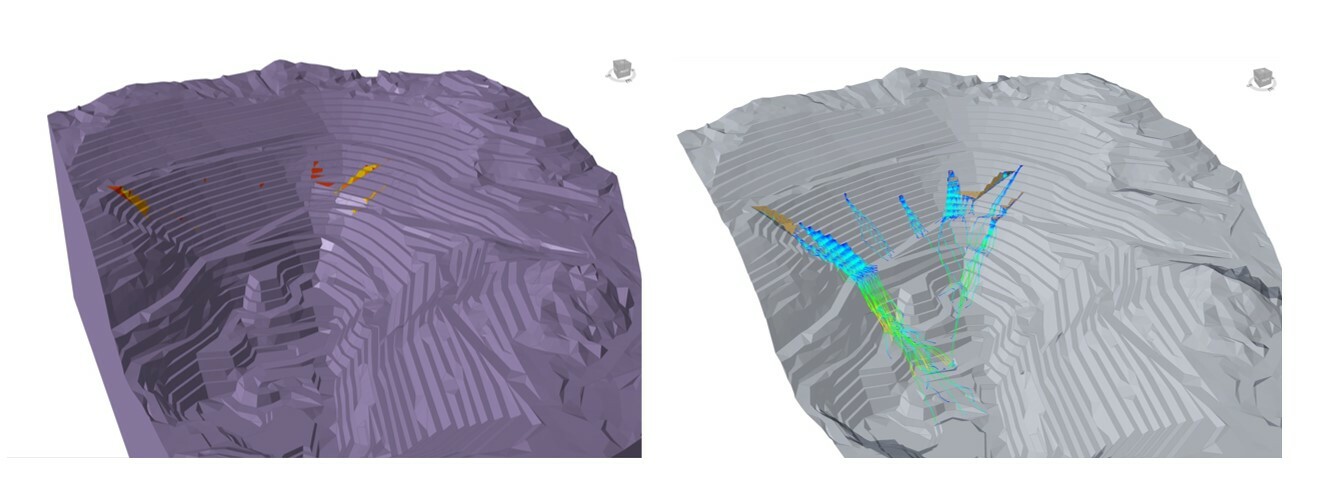
The possibilities don’t end here. If probability analyses in RocSlope3 can simulate the variation in joint locations and hence the variation in the resulting block geometries, then RocSlope3 can generate a complete hazard map of the spatial probability of block failure. The corresponding rockfall analysis can seed rocks at each location in proportion to its probability of failure.
Lastly, a hazard assessment is not complete without consideration for global stability and other possible modes of failure, especially in heavily jointed rock mass or adverse stratifications. The search for the critical slip surface via Slide3 or RS3 could likewise integrate with RocFall3, as hazard zones may be exported and seeded for 3D rockfall analysis.
The Power of Integration
A number of modern analysis software can individually provide you with the capability to evaluate slope stability and the overall safety. However, only through the power of integration can software improve efficiency to your workflow and provide comprehensiveness to your analyses.
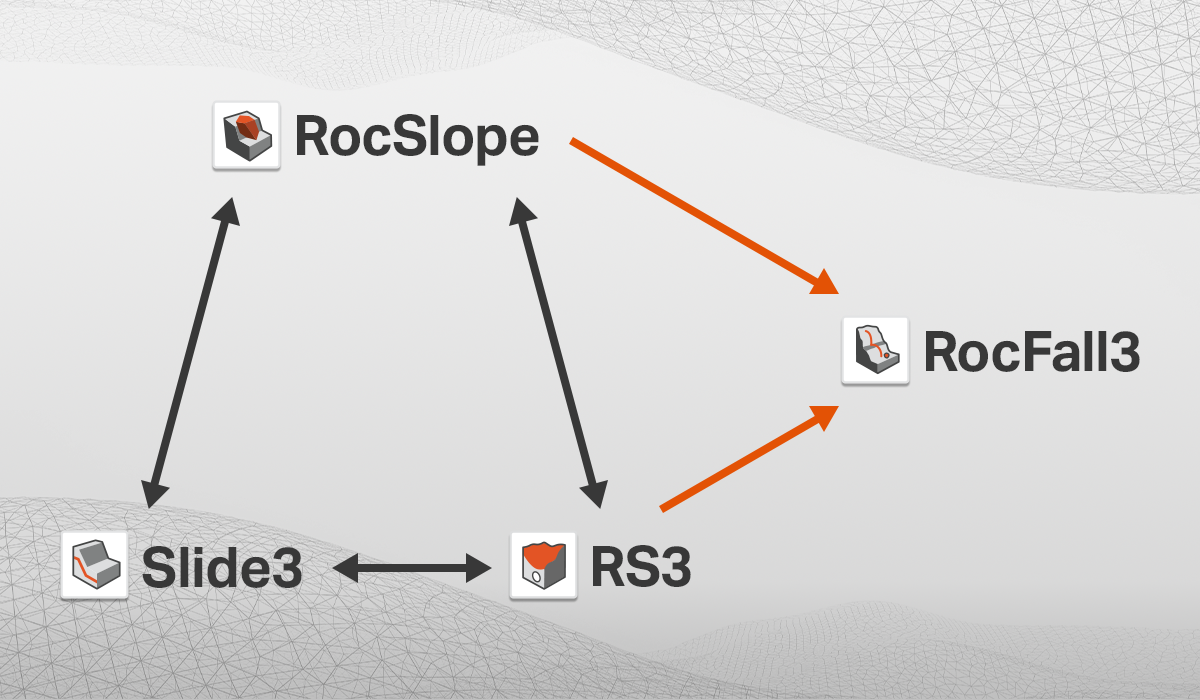
Unlock new levels of efficiency with the combined capabilities of RocSlope3 and RocFall3
Start a free trial of RocSlope3 and RocFall3
Free Trials